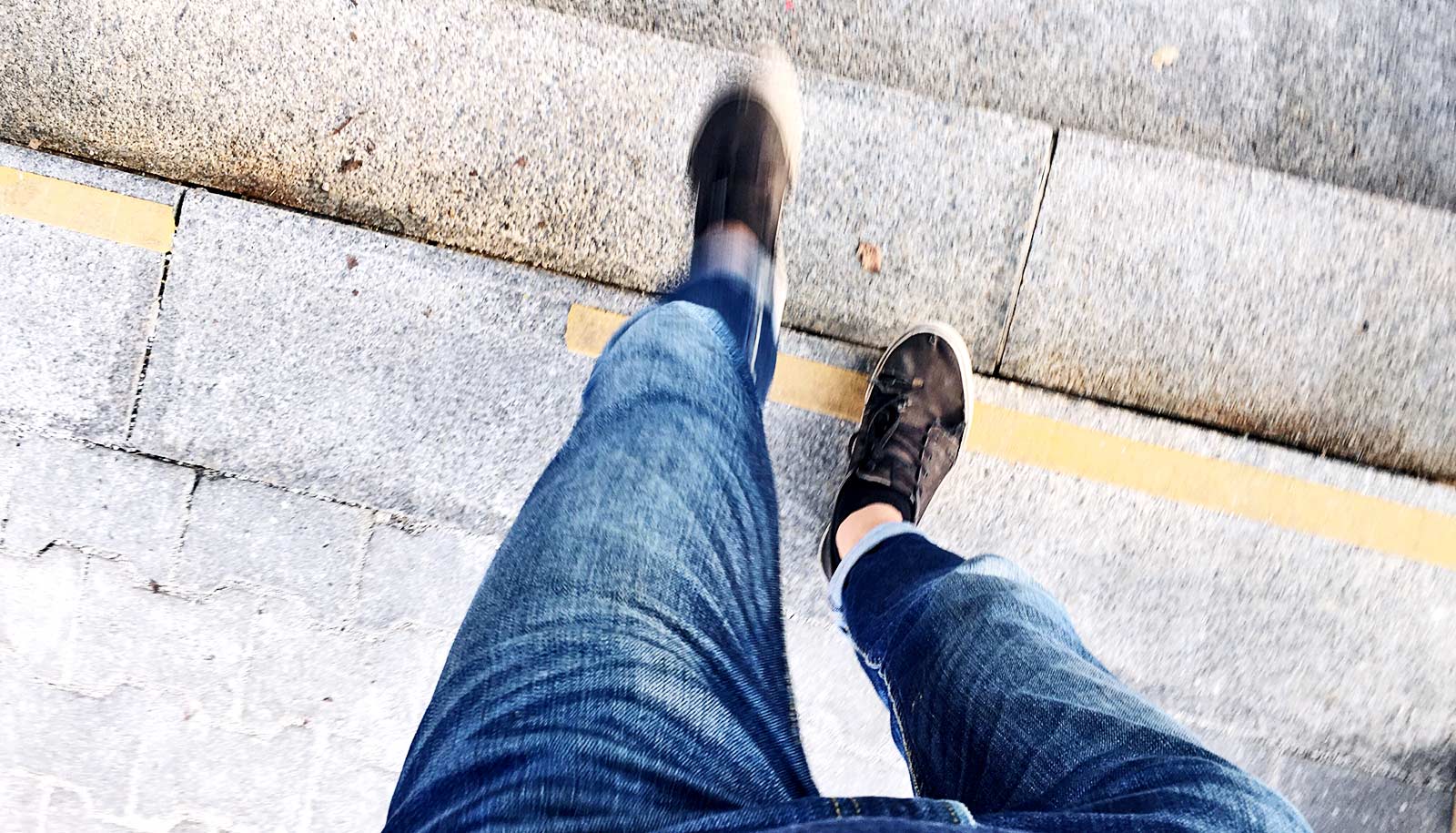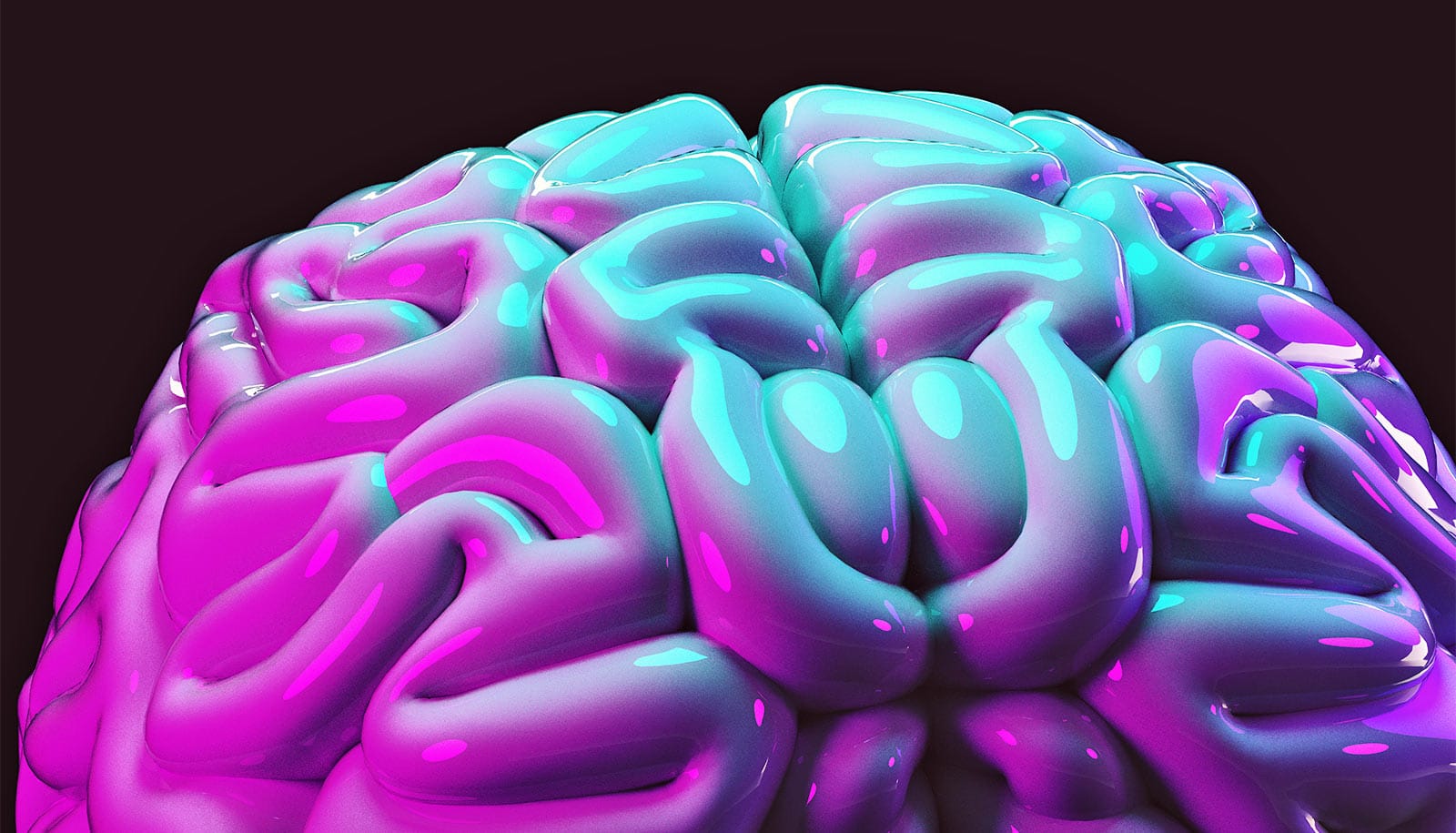Using new technologies to track how vision guides foot placement, researchers are one step closer to knowing what’s going on in the brain when we walk.
The findings could lead to better treatments for mobility impairments—such as strokes, aging, and Parkinson’s—and the development of technologies like prosthetics and robots.
Walking on natural terrain takes precise coordination between vision and body movements to efficiently and stably traverse any given path. But until now, researchers have studied vision and locomotion separately within controlled lab environments, limiting understanding of how various neural and biological systems work together to navigate the natural world.
“One of the beautiful things about visually guided walking is that it involves every level of our perceptuomotor hierarchy,” says Jonathan Matthis, a postdoctoral researcher in the Center for Perceptual Systems at the University of Texas at Austin. “To really understand it, you need to know how vision works, how planning works, how muscles work, how spines work, how physics work.”
The research, which appears in the journal Cell, combined new motion-capture and eye-tracking technologies to track distinct patterns between the two mechanisms. To do so, researchers jerry-rigged a welding mask around an eye tracker—to shade the infrared eye cameras from sunlight—and calibrated the eye tracker with a motion-tracking suit to record gaze and full-body kinematics as participants navigated through three types of terrain: flat, medium, and rough terrain.
“Eye movements are incredibly informative as a window into the cognitive process,” Matthis says. “By tracking eyes, we get a clear picture of the kind of information the central nervous system needs to complete any given task.”
The U.S. just got really bad grades in walking
Researchers found that participants displayed distinct walking and gaze patterns in each of the terrains. Subjects walked quickly with longer strides on the flat terrain, looking down only about half of the time to briefly scan the upcoming path for obstacles.
On the medium and rough terrain, steps became shorter, slower, and more variable, with participants looking at the ground more than 90 percent of the time to precisely fixate upcoming footholds.
In the medium terrain, walkers focused primarily on where their foot would be in two steps. The rough terrain required walkers to split their gaze between their future foot placement in two and three steps to allow for longer-term path planning.
Despite these differences, an unexpected pattern emerged: In all three terrains, participants consistently looked 1.5 seconds ahead of their current location. This is similar to look ahead timing seen in research on other motor actions—stair climbing, driving and reaching—suggesting that this timing plays an important role in human movement.
“The constant look ahead time suggests that walkers are maintaining some sort of global locomotor strategy that is being tuned to each specific environment. Walkers use gaze to ensure that they always know what will be coming up 1.5 seconds down the path,” Mathis says.
Weird heel-toe walk makes human legs ‘longer’
“Good action decisions require not only good sensory data, but also a consideration of the costs and benefits of the action. Taking this type of research out of the lab and into the real world allows us to observe human behavior in its natural environment.
“This gives us more opportunity to discover things we didn’t expect, which will help us advance our scientific knowledge to the benefit of improving clinical treatment of gait-related disorders.”
Source: University of Texas at Austin



